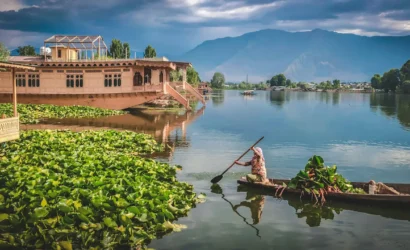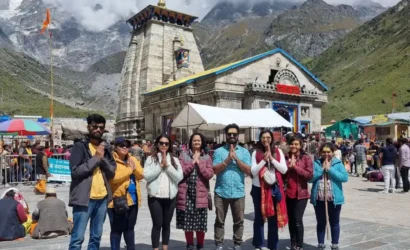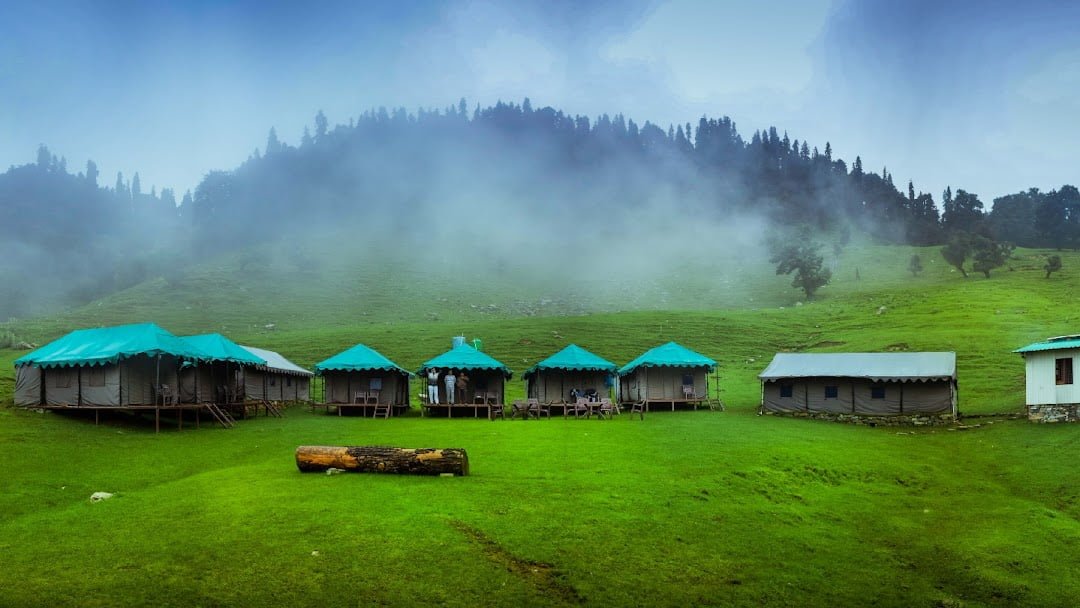Overview
Somewhere away from pollution but full of adventure this virtual paradise on earth has been unknown to the outside world until the great Mountaineer Frank S Smith discovered it in the year 1931. It is famous for its charming and embarking flowers which resembles a kind of fairyland. During ancient times, locals used to call this place ‘Pushpawati Valley’ because the river originates somewhere near it and was considered a place inhabited by fairies. So, people time for another fantastic floral trek-Best of Uttrakhand treks- The Valley of Flowers.
Bestowed with the rare and exotic Himalayan flora, the Valley of Flowers National Park is a bouquet of nature peacefully snuggled in the West Himalayan region of Uttrakhand. The valley of flowers is a much-sought destination for trekkers, flower lovers, botanists, photographers, and wildlife photographers. How can HikerWolf miss this and also for Smith-Frank Smith who discovered this place?
Let’s be a part of the enchanting valley of flowers trek this rainy season!
Itinerary
Drive: 280km /9-10 hrs
Meet early morning at Rishikesh and get transferred to Govind Ghat/Joshimath by vehicle. Making its way along Ganga and Alaknanda Rivers, the drive is an engaging one. Cross holy towns of Rishikesh, Dev Prayag, and Rudra Prayag. Reach the destination and relax in a beautiful homestay. Overnight will be spent in the basic homestay.
Drive: 1hr | Trek 4-5hrs
Today, wake up early morning for a trek to Ghangaria. Trail the valley of flowers trek through forest area and villages and the sights of the waterfall and verdant landscapes. After covering 11km in 4-5 hours, reach Ghangaria. If you wish, you can also hire a mule or use the helicopter service to reach Ghangaria.
Trek: 4-5hrs
This balmy day, look forward to a short climb to the valley, moderate gradient and fetching landscapes. It will take you around 2 hours to reach the famous Valley of Flowers National Park. Feast your eyes on vast meadows dotted with vibrant alpine flowers, many streams, and lofty mountains.
The Valley of Flowers National Park, with its rich biodiversity, flora and fauna, will leave you spellbound by the beauty of nature. You can spot various endangered yet majestic animals at the park such as red fox, snow leopard, and musk deer.
Right at the entrance famous Valley of Flowers National Park, stands the snowy Ratban Parvat Peak, on the left is Nar Parvat and on the right is the dense Birch Forest. Unravel the charms of the region over a good 3-4 hours. Head back to the camp/Lodge at Ghangaria.
Trek: 6-7hrs
Ascend to Hemkund Sahib, a revered Sikh Shrine built next to the mesmerizing lake (ringed by wildflowers with Brahmkamal being the most popular) over 3-4 hours. Expect steep climbs at some places. Once there, soak in the beauty of the place as sip on the piping hot tea served at the Gurudwara (shrine). Visit Laxman Mandir next to the Gurudwara. By noon, retreat to Ghangaria.
Overnight will be spent at the basic stay.
Trek: 3-4hrs
On this day, we will trace the valley of flowers trek back to Govindghat. Plonked on the banks of holy Alaknanda and with Neelkanth Peak as the backdrop, this place of worship makes for a riveting destination, especially for those into spirituality. Here are sulfur water pools and fresh air.
Later in the evening, you head to the lodge in Govind Ghat. Take a shower and dig into a delectable meal. Overnight will be spent in the basic stay.
Drive: 280km/8-9hrs
Dig into breakfast and drive down Rishikesh. The trip ends here.
Download Itinerary
Includes/Excludes
Cost Includes
- Veg meals while on the trek
- First aid medical kits,
- Qualified and experienced trek leader, guide, and support staff.
- All NECESSARY Forest Permits.
- Transportation from Govind ghat to Govind ghat
Cost Excludes
- Personal expenses like portages, tips, laundry, mineral water, etc
- Any activity not mentioned in the inclusions
- 5% GST and processing fees
- Travel Insurance
- Additional costs due to flight cancellation/ roadblocks, Political unrest, etc
- Transportation from Haridwar to Govind ghat and back. If needed, transportation will be provided (Rs 2500) and will be charged additionally.
- Any kind of personal expenses.
- Any kind of food during transit.
- Unscheduled or extended stay due to roadblock
- Return stay at Rishikesh.
Things To Carry
Bare Necessities:
- Trekking shoes
- Backpack (40-60 litres): Rain cover for the backpack is essential.
- Daypack (20 litres): You will need a smaller backpack to carry water, a medical kit and some light snacks for your trek to the Valley of Flowers and Hemkund Sahib.
- The Valley of Flowers trek happens during monsoons so make sure you take a poncho for this trek.
Clothes:
- Three Warm Layers
- Two Trek Pants
- Three Collared T-Shirt
- Thermal
Accessories:
- Sunglasses (Compulsory)
- Sun caps
- Synthetic Hand Gloves
- Balaclava
- Socks (2 pairs)
- Headlamp/LED torch: Mandatory
Others:
- Toiletries: Sunscreen, moisturizer, light towel, lip balm, toilet paper, toothbrush, toothpaste, hand sanitiser. Do not carry wet wipes since these are not biodegradable. If you do happen to use wet wipes to clean up after a trek, make sure you bring them back with you. The same holds for used sanitary napkins. Carry a ziplock bag to put used wet tissues and napkins. Bring this ziplock bag back with you to the city and do not dispose of wet tissues and sanitary napkins in the mountains.
- Cutlery: Carry a spoon, coffee mug, and a lunch box. We insist on trekkers getting their own cutlery for hygiene reasons.
- Two water bottles: 1 litre each
- Plastic covers: While packing, use plastic bags to compartmentalize things and carry a few extra plastic bags for wet clothes.
Mandatory Personal Medical Kit:
- Diamox – 10 tablets (to prevent AMS)
- Dexamethasone – one strip
- Nifedipine – 5 tablets
- Crocin – 6 tablets (fever)
- Avomine – 4 tablets (motion sickness)
- Avil 25mg – 4 tablets (allergies)
- Combiflam – 4 tablets (Pain killer)
- Norflox TZ & Lomofen– 6 tablets each (diarrhoea)
- Digene – 10 tablets (acidity)
- Omez/ Rantadine – 10 tablets (antacids)
- Crepe bandage – 3 to 5 meters
- Gauze – 1 small roll
- Band-aid – 10 strips
- Cotton – 1 small roll
- ORS – 10 packets
- Betadine or any antiseptic cream
- Moov spray (aches, & sprains)
- Knee cap, if you are prone to a knee injury
- Anti-fungal powder
Documents:
- Original and Copy of Identity Proof
Note
- Do not carry any valuables. Please take care of it in case you are carrying the same. We will not be responsible if you lose them by any chance.
- We will provide you with complete assistance in planning your travel from your hometown to the meeting point. You are free to choose any mode of transportation, be it train, flight, or bus as per your budget and convenience.
Enquiry Form
FAQs
We prefer to have a group of 15-18 people as we intend to have more fun and give personal care.
We need at least 6 people to kick start our treks.
All our treks are led by certified professional trekking leaders, climbers. In addition to them, there will be a local guide, a cook, an assistant, porters, and other staff.
Safety is of prime importance and we understand them very well. The major of our staff is a girl for that very reason so be assured you are in safe and reliable hands.
We rent taxis such as Innova, Tempo Traveler, Bolero, Tata Sumo, etc. from our suppliers.
We always recommend carrying the backpack while trekking to help maintain body posture. If you can’t, we can provide you with a mule/porter to carry your backpack. I want this service you must inform us at least 1 week before the trek. The offloading fee would be around INR 300 per person per day.
Shoes are the lifeline during the trek. It is highly recommended to buy trekking shoes for a well well-known brand. You can consider companies like Quechua, Columbia, etc. A waterproof shoe with ankle support will work well.
During the trek, separate toilet tents will be installed on each campsite.
Accommodation is in dome tents/Homestay.
Yes, we will provide sleeping bags and mattresses during the excursion. Our sleeping bags can withstand temperatures down to -10 degrees.
It totally depends on the dynamics of the group. If there is a couple, we can give them a separate tent. If there is an odd number of people, then the tents would be on triple sharing basis.
After selecting the trip/excursion, you can book by clicking the Book now button or you can contact us and we will guide you through the booking which is quite easy.
We provide nutritious and healthy food during the trek. We always serve vegetarian Indian food and eggs.
Himalaya water is considered the purest and safest water to drink. But for safety reasons, we sometimes boil water and use it for drinking and cooking.
If you find clean water while hiking, always fill the water where it flows, not where the water is stable or at rest.
Yes, you can make suggestions. We will analyze this and, if we consider it feasible, we will apply it.
Yes, we can customize any trip/excursion based on your needs and feasibility.
No, but our trekking leaders are certified in the first aid course for wildlife and always carry a first aid kit and oxygen cylinders during high altitude excursions.
Yes, it is recommended to bring your own medicines while trekking.
Well, it totally depends on the person. There are usually no side effects of Diamox, but if you have previous medical conditions, it is best to consult your doctor.
Our itinerary is designed in such a way that we get sufficient time acclimatized. If in case you have any problem while trekking, inform your trek leader about your condition as soon as possible.
The Minimum age limit is 14 years
If it starts to rain slowly during the trek, we will continue walking as expected. Your poncho will keep you dry. If it rains a lot, we will try to find a refuge and wait for the rain to stop or subside. If it rains in the field, there would be no problems because all our living tents, our kitchen tents, and our bathroom tents are waterproof. You will stay dry inside.
It differs from person to person. If you think this will help you maintain balance while trekking, bring your cane. Some people believe that walking sticks break the pace while walking. It depends on you






